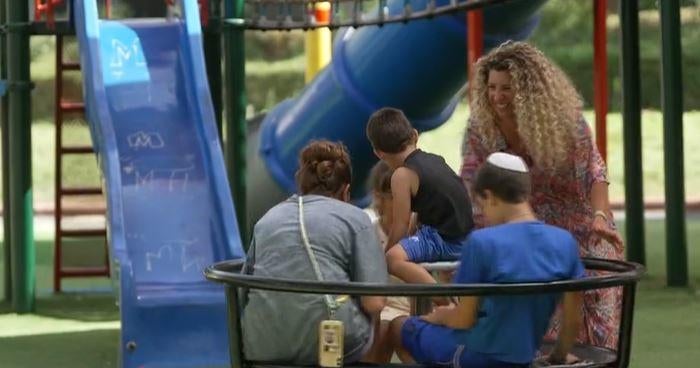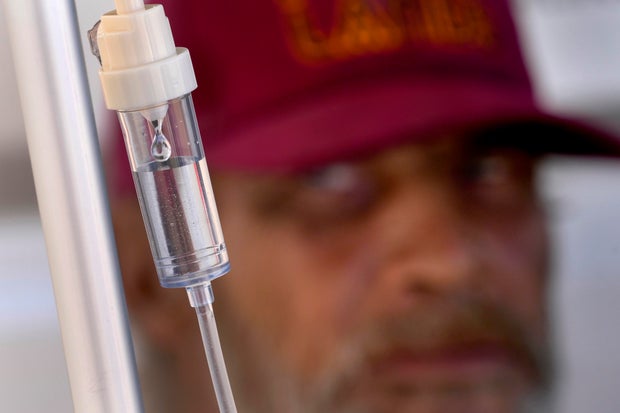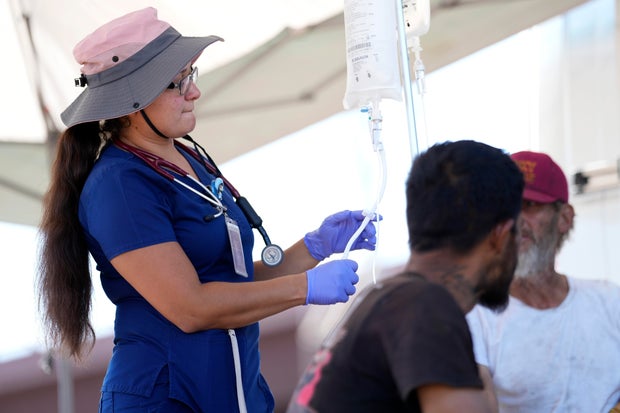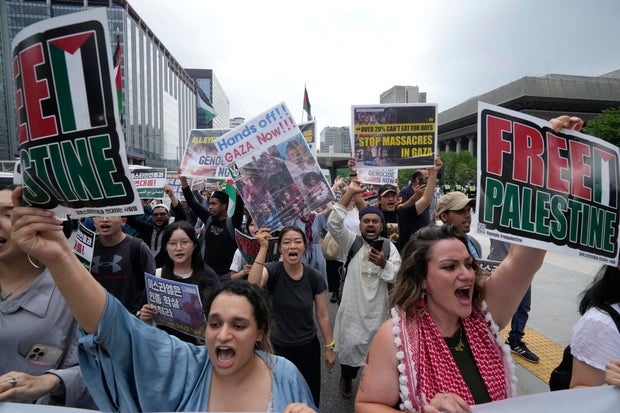CBS News
Scotland halts prescription of puberty blocking hormones for minors as gender identity service faces scrutiny

London — The only gender identity clinic in Scotland has paused prescribing puberty blockers to new patients under 18 years old, mirroring action taken by England’s health authorities after a landmark review found young people had been let down by “remarkably weak” evidence backing medical interventions in gender care.
The report, commissioned by Britain’s National Health Service, also found that the “toxicity” of the debate around gender identity meant physicians were operating in fear.
Dr. Hillary Cass, who led the review that produced the 388-page report published earlier this month, said “we don’t have good evidence” that puberty blockers are safe to use to prevent changes that come during puberty.
“It is unusual for us to give a potentially life-changing treatment to young people and not know what happens to them in adulthood, and that’s been a particular problem, that we haven’t had the follow-up into adulthood to know what the results of this are,” Cass told CBS News partner BBC News.
Puberty blockers suppress the release of hormones that cause puberty. They can be prescribed to children who are questioning their gender in order to stop physical changes such as the growth of facial hair or breasts.
“The next step from here is to work with the Scottish government and academic partners to generate evidence that enables us to deliver safe care for our patients,” Emilia Crighton, the director of the public health service for the Glasgow region, said in a statement. “We echo the views of Dr. Hilary Cass that toxicity around public debate is impacting the lives of young people seeking the care of our service and does not serve the teams working hard to care and support them. We understand the distress that gender incongruence can cause and, while all referrals to endocrinology are paused, we will continue to give anyone who is referred into the young people’s gender service the psychological support that they require while we review the pathways in line with the findings.”
Scottish Trans, an advocacy group, said it disagreed with the decision to pause prescriptions of puberty blockers for minors, which it said “has been taken within the context where the reality of trans people’s experiences and lives is questioned almost daily in some of the media and some political circles.”
“This makes us worry that the decision has been influenced by that context rather than solely through consideration of the best interests of trans children and young people,” Scottish Trans said in a statement, adding that between 2011 and 2023, only 87 young Scottish people were prescribed puberty blockers.
“The exceptionally rare and cautious choice of puberty blocker prescription, made for a small number after huge waits, is being wrongly painted by some as though it was commonplace and rushed. Nothing could be further from the truth. We’re saddened that this change will result in some young people being unable to access the care they need at all, or having to wait even longer for it,” Scottish Trans said.
Ahead of the Cass review’s publication, the NHS said in March that it would stop prescribing puberty blockers to under-18s at gender identity clinics in England. New young patients in the U.K. can still get a prescription for hormone blockers, but only as part of a clinical trial.
Cass’ review called for better research into the medications and their long-term effects, as well as the characteristics of children seeking treatment.
“The reality is we have no good evidence on the long-term outcomes of interventions to manage gender-related distress,” she wrote in the review.
She encouraged a holistic assessment of patients, taking into consideration issues that may not relate to their gender identity, including screening for conditions such as autism to address “diagnostic overshadowing” that could occur when issues of gender are brought up.
“What’s unfortunately happened for these young people is that, because of the toxicity of the debate, they’ve often been bypassed by local services who’ve been really nervous about seeing them,” Cass told the BBC. “So, rather than doing the things that they would do for other young people with depression or anxiety, or perhaps undiagnosed autistic spectrum disorder, they’ve tended to pass them straight on to the GID (Gender Identity Disorder) service.”
The Cass review was commissioned following a sharp rise in referrals to gender identity services in the U.K., from around 250 a year to more than 5,000 in 2022.
CBS News
Street medics treat heat illnesses among homeless people as temperatures rise

Alfred Handley leaned back in his wheelchair alongside a major Phoenix freeway as a street medicine team helped him get rehydrated with an intravenous saline solution dripping from a bag hanging on a pole.
Cars whooshed by under the blazing 96-degree morning sun as the 59-year-old homeless man with a nearly toothless smile got the help he needed through a new program run by the nonprofit Circle the City.
“It’s a lot better than going to the hospital,” Handley said of the team that provides health care to homeless people. He’s been treated poorly at traditional clinics and hospitals, he said, more than six years after being struck by a car while he sat on a wall, leaving him in a wheelchair.
Circle the City, a non-profit that works in multiple cities and hospitals and treats about 9,000 people annually, introduced its IV rehydration program as a way to protect homeless people in Phoenix from life-threatening heat illness as temperatures regularly hit the triple-digits in America’s hottest metro.
Matt York / AP
Homeless people accounted for nearly half of the record 645 heat-related deaths last year in Maricopa County, which encompasses metro Phoenix. As summers grow warmer, health providers from San Diego to New York are being challenged to better protect homeless patients.
Dr. Liz Frye, vice chair of the Street Medicine Institute which provides training to hundreds of healthcare teams worldwide, said she didn’t know of groups other than Circle the City administering IVs on the street. The organization also distributes tens of thousands of water bottles each summer and tries to educate people about hot weather dangers.
“But if that’s what needs to happen to keep somebody from dying, I’m all about it,” Frye said.
Bringing care to people in need
The amount of people requiring treatment for heat illnesses is rising. The Boston Health Care for the Homeless Program, featured in last year’s book, “Rough Sleepers,” now sees patients with mild heat exhaustion in the summer after decades of treating people with frostbite and hypothermia during the winter, said Dr. Dave Munson, the street team’s medical director.
“It’s certainly something to worry about,” said Munson, noting that temperatures in Boston hit 100 degrees with 70% humidity during June’s heat wave. Homeless people, he said, are vulnerable to very hot and very cold weather not only because they live outside, but they often can’t regulate body temperature due to medication for mental illness or high blood pressure, or because of street substance use.
The Phoenix team searches for patients in homeless encampments in dry riverbeds, sweltering alleys and along the canals that bring water to the Phoenix area. About 15% are dehydrated enough for a saline drip.
Matt York / AP
“We go out every day and find them,” said nurse practitioner Perla Puebla. “We do their wound care, medication refills for diabetes, antibiotics, high blood pressure.”
Puebla’s street team ran across Handley and 36-year-old Phoenix native Phillip Enriquez near an overpass in an area frequented by homeless people because it’s near a facility offering free meals. Across the road was an encampment of tents and lean-tos along a chain-link fence.
Enriquez sat on a patch of dirt as Puebla started a drip for him. She also gave him a prescription for antibiotics and a referral to a dentist for his dental infection.
Living outside in Arizona’s broiling sun is hard, especially for people who may be mentally ill or use sedating drugs like fentanyl that make them less aware of their surroundings. Stimulants like methamphetamine contribute to dehydration, which can be fatal. Dr. Matt Essary, who works with Circle in the City’s mobile clinics, said the organization also often treats surface burns that can happen when a medical emergency or intoxication causes someone to fall on a sizzling sidewalk.
Matt York / AP
Temperatures this year have reached 115 degrees in metro Phoenix, where six heat-related deaths have been confirmed through June 22. Another 111 are under investigation, and the city is seeing an “increasing” number of patients with heat illnesses every year, according to Dr. Aneesh Narang, the assistant medical director of emergency medicine at Banner Medical Center-Phoenix, which treats many homeless people with heat stroke.
Narang’s staff works frequently with Circle the City, whose core mission is providing respite care, with 100 beds for homeless people not well enough to return to the streets after a hospital stay.
Extreme heat worldwide requires a dramatic response, said physician assistant Lindsay Fox, who cares for homeless people in Albuquerque, New Mexico, through an initiative run by the University of New Mexico’s School of Medicine.
Three times weekly, Fox treats infections, cleans wounds and manages chronic conditions in consultation with hospital colleagues. She said the prospect of more heat illness worries her.
Highs in Albuquerque can hit the 90s and don’t fall enough for people living outside to cool off overnight, she said.
“If you’re in an urban area that’s primarily concrete, you’re retaining heat,” she said. “We’re seeing heat exposure that very quickly could go to heat stroke.”
Serious heat stroke is far more common in metro Phoenix, where Circle the City is now among scores of health programs for the homeless in cities like New York, San Diego and Spokane, Washington.
Circle the City works with medical staff in seven Phoenix hospitals to help homeless patients get after-care when they no longer need hospitalization. It also staffs two outpatient clinics for follow-up.
Rachel Belgrade waited outside Circle the City’s retrofitted truck with her black-and-white puppy, Bo, for Essary to write a prescription for the blood pressure medicine she lost when a man stole her bicycle. She accepted two bottles of water to cool off as the morning heat rose.
“They make all of this easier,” said Belgrade, a Native American from the Gila River tribe. “They don’t give you a hard time.”
CBS News
Hamas appears to clear way for possible cease-fire deal with Israel after reportedly dropping key demand
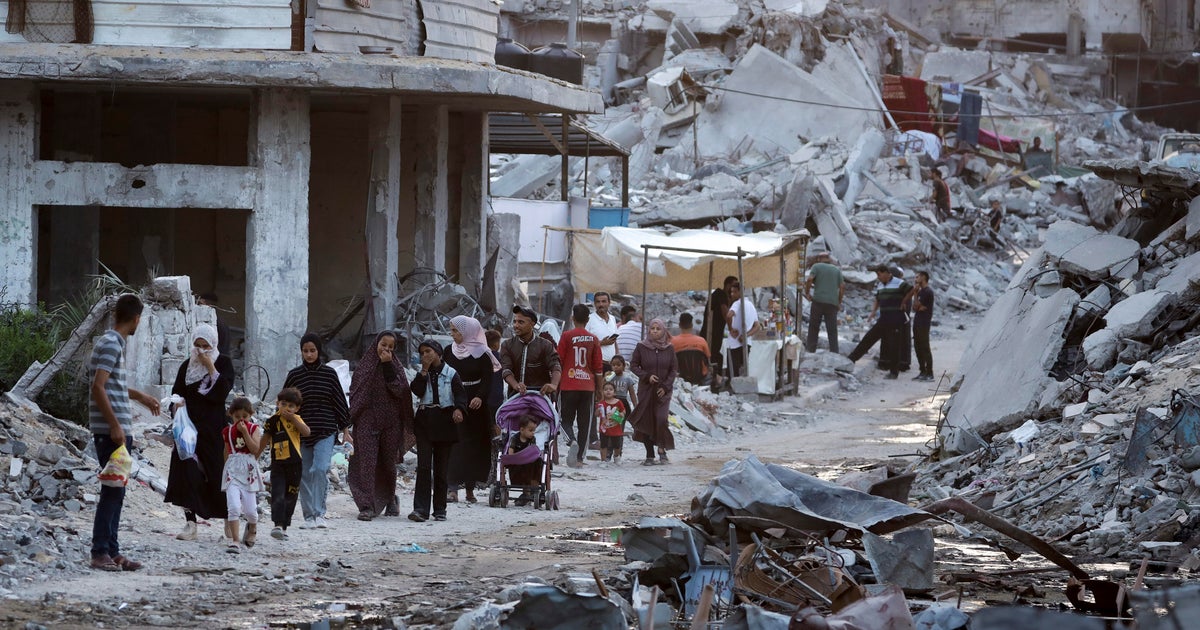
There is new hope for a cease-fire deal in the Middle East after Hamas responded to a U.S.-backed proposal for a phased deal in Gaza.
The militant group – which controlled Gaza before triggering the war with an Oct. 7 attack on Israel – has reportedly given initial approval of the cease-fire deal after dropping a key demand that Israel give an up-front commitment for a complete end to the war, a Hamas and an Egyptian official told the Associated Press on Saturday.
A senior U.S. official says that Hamas’ response to the proposal “may provide the basis for closing the deal.”
The apparent compromise could deliver the first pause in fighting since November and set the stage for further talks on ending the devastating nine months of fighting. But all sides cautioned that a deal is still not guaranteed.
The two officials, who spoke on condition of anonymity to discuss ongoing negotiations, told the Associated Press that Washington’s phased deal would first include a “full and complete” six-week cease-fire that would see the release of a number of hostages, including women, older people and the wounded, in exchange for the release of hundreds of Palestinian prisoners. During the 42 days, Israeli forces would withdraw from densely populated areas of Gaza and allow the return of displaced people to their homes in northern Gaza, the officials said.
Over that period, Hamas, Israel and mediators would negotiate the terms of the second phase that could see the release of the remaining male hostages, both civilians and soldiers, the officials said. In return, Israel would free additional Palestinian prisoners and detainees. The third phase would see the return of any remaining hostages, including bodies of dead captives, and the start of a years-long reconstruction project.
Ahn Young-joon / AP
Hamas still wants “written guarantees” from mediators that Israel will continue to negotiate a permanent cease-fire deal once the first phase goes into effect, the officials said.
The Hamas representative told The Associated Press the group’s approval came after it received “verbal commitments and guarantees” from the mediators that the war won’t be resumed and that negotiations will continue until a permanent cease-fire is reached.
“Now we want these guarantees on paper,” he said.
In line with previous proposals, the deal would see around 600 trucks of humanitarian aid entering Gaza daily — including 50 fuel trucks — with half of them bound for the hard-hit northern of the enclave, the two officials said. Following Israel’s assault on the southernmost city of Rafah, aid supplies entering Gaza have been reduced to a trickle.
Israel launched the war in Gaza after Hamas’ October attack in which militants stormed into southern Israel, killed some 1,200 people — mostly civilians — and abducted about 250. Israel says Hamas is still holding about 120 hostages — about a third of them now thought to be dead.
Since then, the Israeli air and ground offensive has killed more than 38,000 people in Gaza, according to the Hamas-run Health Ministry, which does not distinguish between combatants and civilians in its count. The offensive has caused widespread devastation and a humanitarian crisis that has left hundreds of thousands of people on the brink of famine, according to international officials.
Months of on-again off-again cease-fire talks have stumbled over Hamas’ demand that any deal include a complete end to the war. Prime Minister Benjamin Netanyahu has offered to pause the fighting but not end it until Israel reaches its goals of destroying Hamas’ military and governing capabilities and returning all hostages held by the militant group.
Netanyahu’s office did not respond to requests for comment, and there was no immediate comment from Washington.
CBS News previously reported that an Israel delegation headed by Mossad Director David Barnea was traveling to Qatar for talks. Sources told CBS News that Barnea was set to meet with Qatari Prime Minister Sheikh Mohammed bin Abdulrahman Al Thani for discussions.
On Friday, the Israeli prime minister confirmed that the spy agency’s chief had paid a lightning visit to Qatar, a key mediator. But his office said “gaps between the parties” remained.
President Biden held a 30-minute call with Netanyahu on Thursday, a senior Biden administration official told reporters, during which the two leaders walked through the latest draft of the proposal.
U.S. officials have said the latest proposal has new language that was proposed to Egypt and Qatar on Saturday and addresses indirect negotiations that are set to commence during the first phase of the three-phase deal that Mr. Biden laid out in a May 31 speech.
Hamas has expressed concern Israel will restart the war after the hostages are released. Israeli officials have said they are worried Hamas will draw out the talks and the initial cease-fire indefinitely, without releasing all the hostages.
Netanyahu is under pressure from Israel’s closest ally – the United States – to negotiate a ceasefire, but at home, two far-right wing members of his cabinet have threatened to bring down the governing coalition if he agrees to a truce.
Israel bombardment continues
The Hamas-run Interior Ministry said four police officers were killed in an Israeli airstrike Saturday in Rafah, the AP reported. The ministry, which oversees civilian police, said the officers were killed during foot patrol securing properties. It said eight other police officers were wounded. Israel’s military did not immediately respond to questions.
In Deir al-Balah, prayers were held for 12 Palestinians, including five children and two women, killed in three separate strikes in central Gaza on Friday and Saturday, according to hospital officials. The bodies were taken to al-Aqsa Martyrs Hospital, where AP journalists counted them.
Two of those killed in a strike that hit the Mughazi refugee camp Friday were employees with the United Nations agency for Palestinian refugees, the organization’s director of communications told the AP. Juliette Touma said a total of 194 workers with the agency have been killed since October.
Jehad Alshrafi / AP
Earlier this week, an Israeli evacuation order in the southern city of Khan Younis and the surrounding areas affected about 250,000 Palestinians. Many headed to an Israeli-declared “safe zone” centered on the Muwasi coastal area or Deir al-Balah.
Ground fighting has raged in Gaza City’s Shijaiyah neighborhood for the past two weeks, forcing tens of thousands of people to flee their homes. Many have sheltered in the Yarmouk Sports Stadium, one of the strip’s largest soccer arenas.
CBS News
Watch owned by Theodore Roosevelt recovered decades after theft

Watch CBS News
Be the first to know
Get browser notifications for breaking news, live events, and exclusive reporting.








